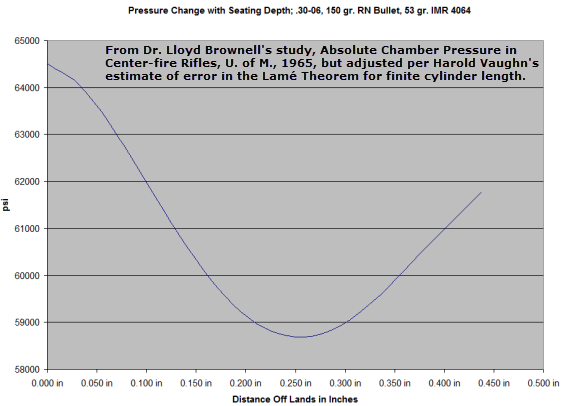Moved it for ya!

And, to answer your question, you already know.

my .300 Weatherby and found where my bullet meets the rifling
"Freebore" is the distance the bullet travels before it contacts the rifling.
how can I figure out the freebore that Weatherby cartridges require
The cartridge itself does not
require a set distance. Anything where the bullet does not touch the lands when chambered will work fine. However, certain combinations of factors work better than others.
Benchrest shooters discovered a long time ago that seating the bullet so it is just off the lands usually gave the best accuracy. And by what I read, a great many people today think you "have" to do it that way.
You don't.
Unless you are looking for that nth degree that wins benchrest matches, or pops the prairie dog at 300+ yds.
Weatherby rifles (at least the older ones, I don't know about today) were made with about 1/2" of freebore. A lot more than anyone else at the time. This, along with the huge cases powder capacity, gave Weatherbys higher velocity than anything else (again, at the time).
The bullets essentially got a good long running start, before hitting the rifling.
This usually does not give absolute top end accuracy, BUT, does give accuracy well within the needs of a big game hunter, and slightly higher velocity.
I do not know if other gun makers who chamber the .300 Weatherby use the same amount of freebore that Weatherby did. I do not think they do.
What rifle do you have?


